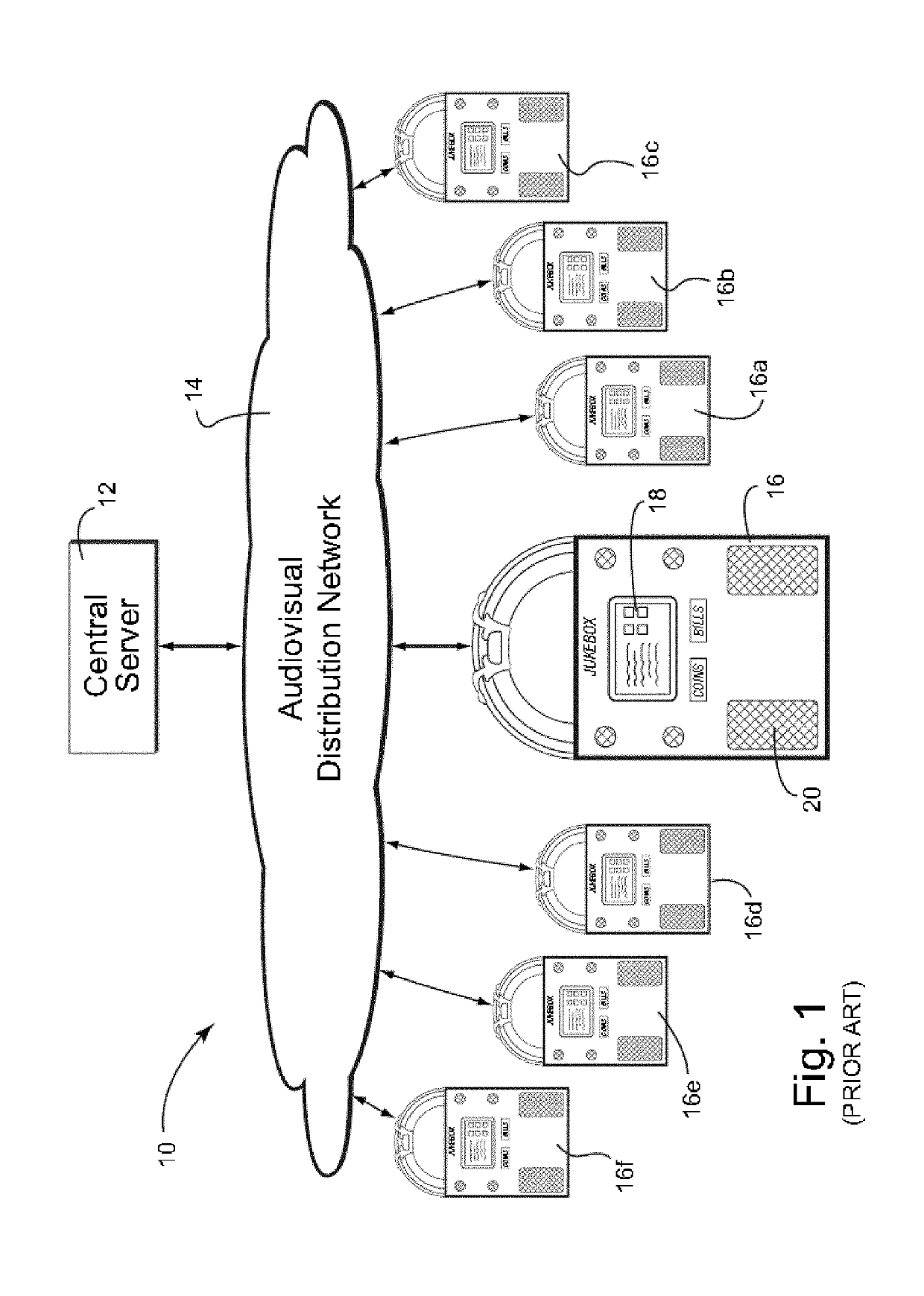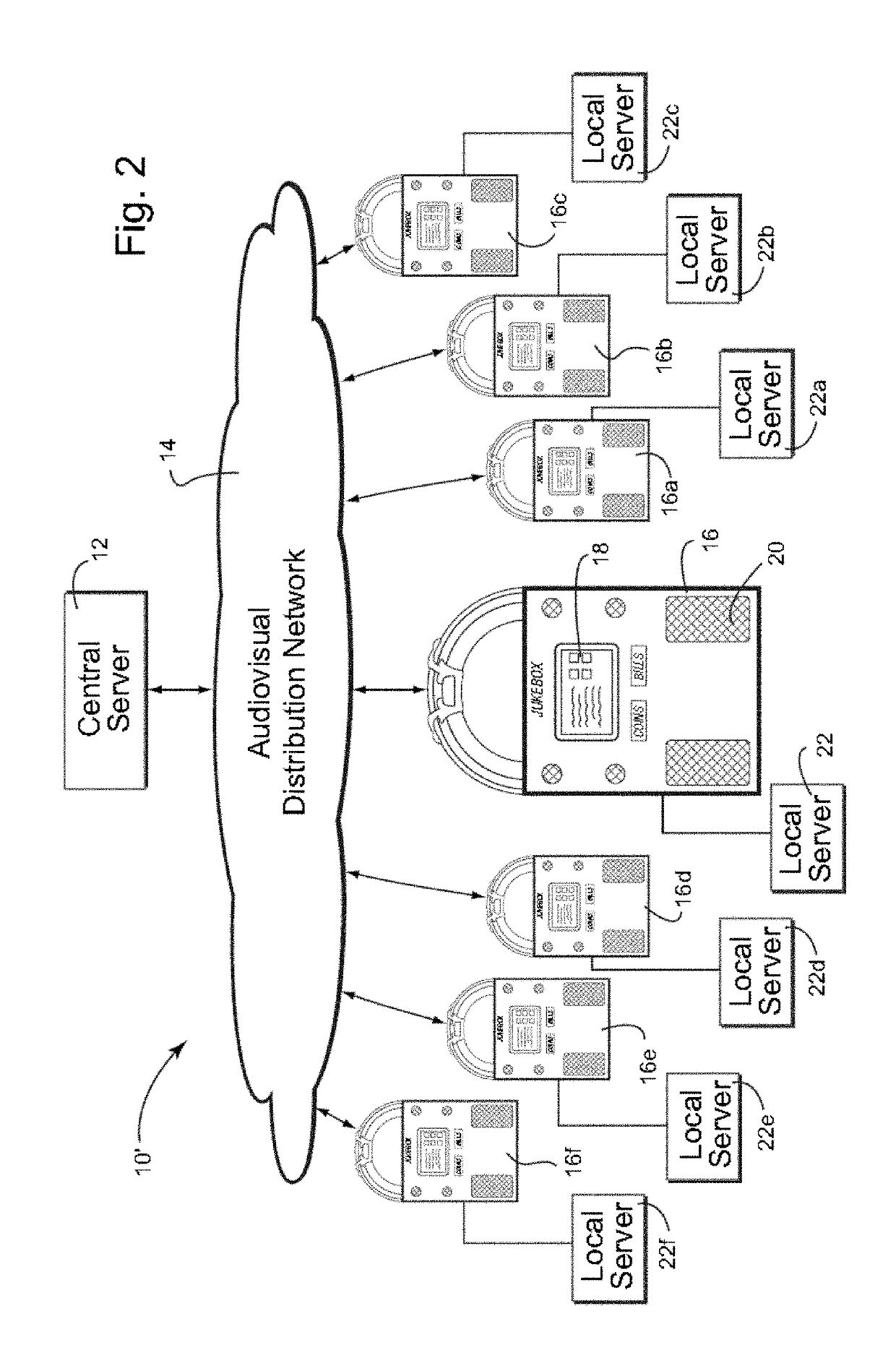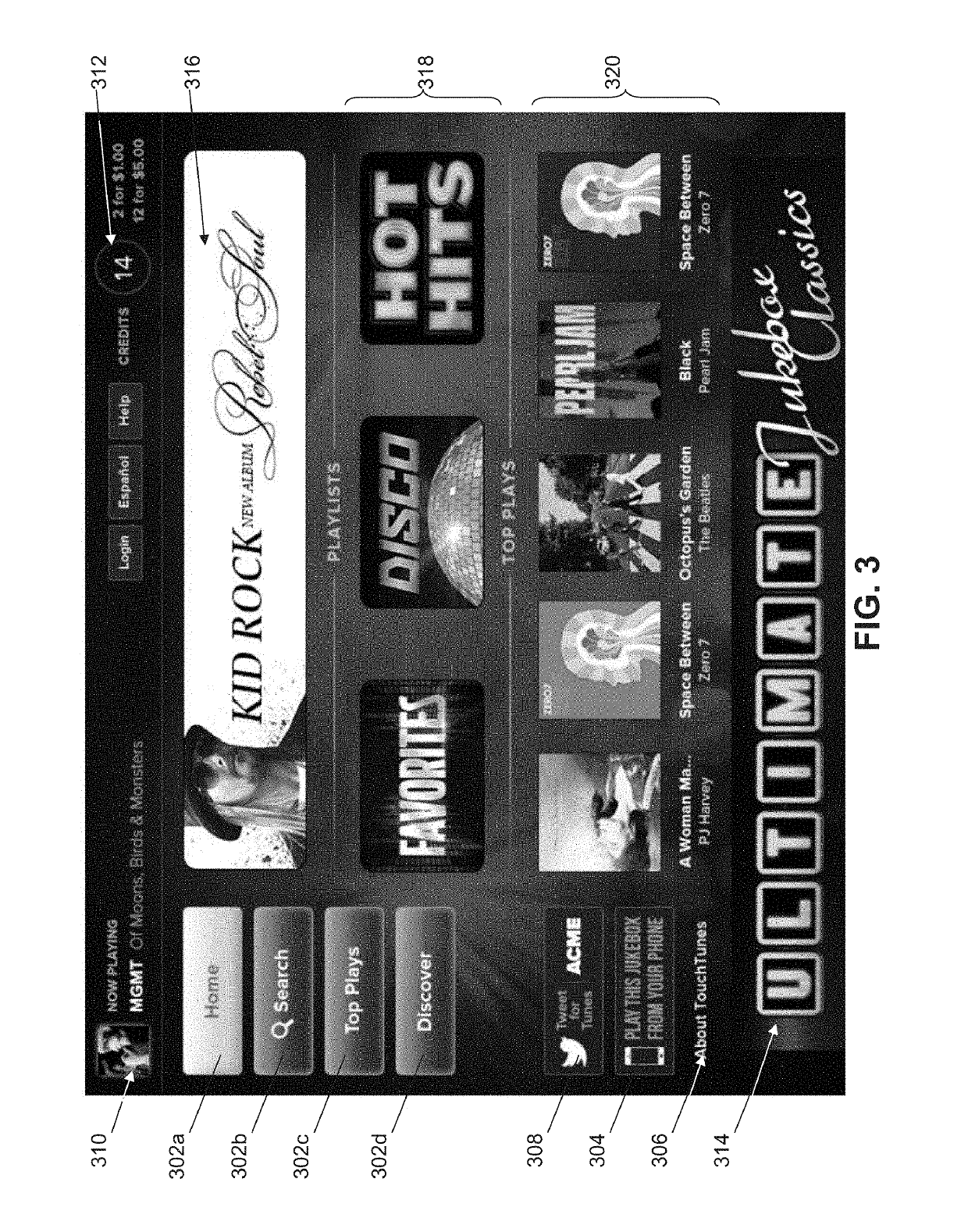Digital jukebox device with improved user interfaces, and associated methods
a digital jukebox and user interface technology, applied in the field of entertainment systems, can solve the problems of reducing the use of the jukebox (and the revenue generated by thereby), limiting the storage capacity of the mass storage device of the jukebox, and achieving the effect of negative feedback
- Summary
- Abstract
- Description
- Claims
- Application Information
AI Technical Summary
Benefits of technology
Problems solved by technology
Method used
Image
Examples
Embodiment Construction
[0106]Referring now to the drawings, FIG. 2 is a block diagram of an exemplary embodiment of an improved jukebox system 10′. The jukebox system 10′ includes similar elements as shown in FIG. 1 and described above, including a central server 12, communications network 14, and remote jukebox devices 16, 16a-16f. However, the jukebox system 10′ further includes local servers 22, 22a-22f respectively connected to each of the jukebox devices 16, 16a-16f. The central server 12 includes a master library of songs (and / or other content). Each of the jukebox devices includes a subset of the master library on a local storage device of the jukebox. The central server may be used to individually manage the contents of the jukebox device, by monitoring usage of and updating the subset of songs on each of the jukebox devices with the intent of maximizing the usage thereof. The central server 12 periodically receives data from each of the jukeboxes for the purpose of royalty accounting and payment ...
PUM
 Login to View More
Login to View More Abstract
Description
Claims
Application Information
 Login to View More
Login to View More - R&D
- Intellectual Property
- Life Sciences
- Materials
- Tech Scout
- Unparalleled Data Quality
- Higher Quality Content
- 60% Fewer Hallucinations
Browse by: Latest US Patents, China's latest patents, Technical Efficacy Thesaurus, Application Domain, Technology Topic, Popular Technical Reports.
© 2025 PatSnap. All rights reserved.Legal|Privacy policy|Modern Slavery Act Transparency Statement|Sitemap|About US| Contact US: help@patsnap.com



